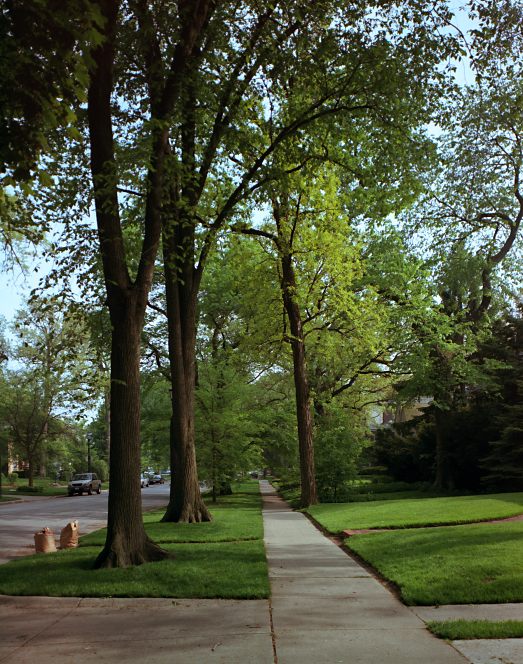
Here are some examples of what can be done with the Epson 2450 scanner.
The first image was created on Portra NC160 film using a Horseman Technical
Camera in 6 x 7 format. The Horseman allows for limited camera movements.
In this case I used a 65 mm lens and shifted vertically to include
the tree tops. The exposure was at f/8, 1/125.
There was some wind, and that could have affected the sharpness of the foliage.
The picture was taken during the late afternoon with sun from the
right filtering through the trees. I scanned the negative at 2400
ppi using my Epson 2450 and Vuescan with sharpening set at 1.
The original image has pixel dimensions 5235 x 6648, but I've rescaled
it for inclusion here. I also sharpened it somewhat after rescaling.
The detail below it is at the resolution of the original. It shows
a small section at the middle right of the full frame. It was not
sharpened beyond what Vuescan did.

Here is the detail.
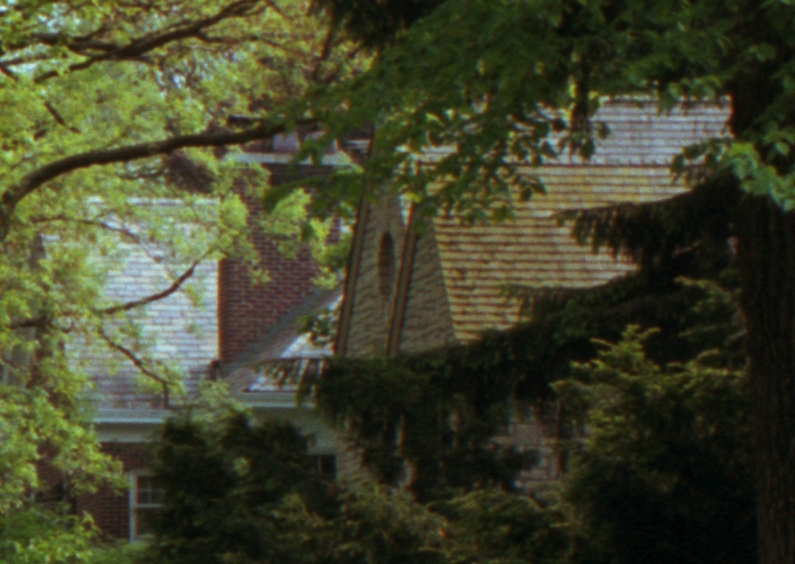
Note the resolution of detail in the chimney and roofs, some of it
at relatively low contrast. In the chimney you can see two bricks
vertically in a distance of ten pixels. Note also that you can just
barely make out the bricks in the house, which is in shadow. In the
original scan, there is some detail visible in the foliage in the deep
shadow on the right.
The second example shows a detail from a negative made with a Rolleiflex
2.8E3 twin lens reflex of National Bureau of Standards test charts. The
film was Ilford FX developed in Microdol. It was scanned with Vuescan
at 2400 ppi and no sharpening. The image is 281 x 282 pixels. The
line pairs marked 24 are visible and those marked 28 are barely visible.
Counting pixels suggests a slightly lower estimate, so I estimate that the
scanner is capable of resolving between 20 and 25 lp/mm. With sharpening,
it may be possible to improve this a bit.
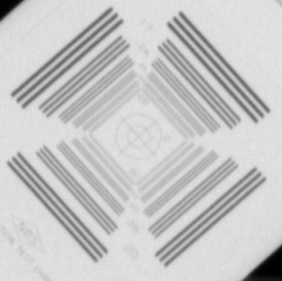
The next example was also made with the Horseman in 6 x 7 format, probably
with a 90 mm lens, on Verichrome Pan film which was developed in a fine
grain developer. If I remember correctly, the image was overexposed
and underdeveloped to preserve shadow detail and highlights. The
image was scanned at 2400 ppi and modestly sharpened in the Gimp to enhance
edge detail. Below you will find a jpeg, rescaled for web viewing, of the
full frame and also one corner which is 8/20 ths of the full frame. That
shows you approximately what you would see in that corner if you
made a 20 x 24 inch print of the full frame, which could be done printing
at about 260 ppi. Below that is an extreme detail of lettering on
the door as a jpeg with no reduction in scale.
Here is the full frame.
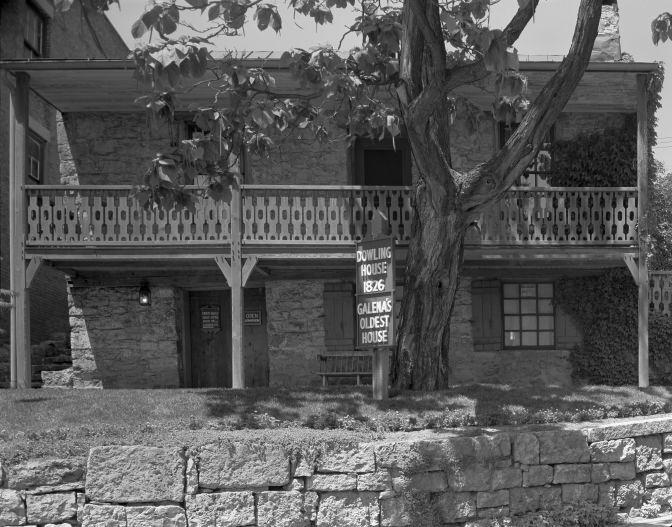
Here is the 8/20 size section.
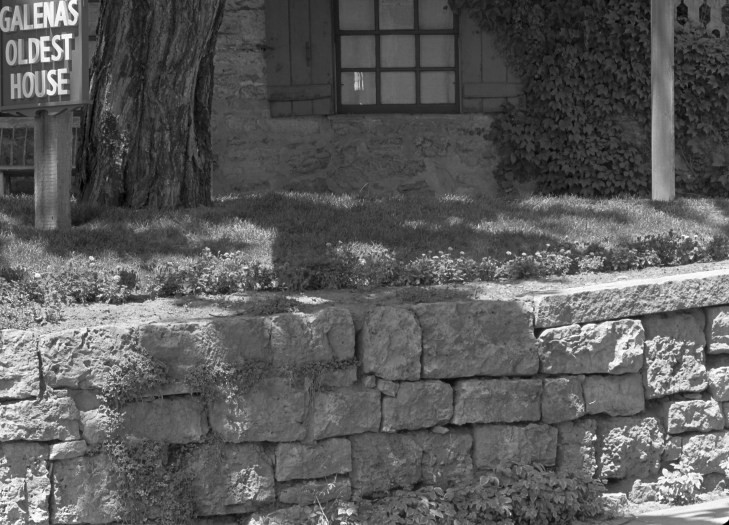
Note the detail in the foliage and also in the shadows.
Here is the detail of the sign.
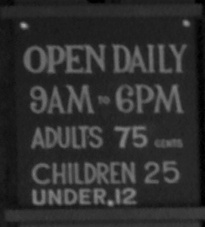
The letters in "CENTS" are about ten pixels high. The sharpening
enhanced them, but they were also legible in the orignal unsharpened scan.
I spent some time at an Evanston Art Fair looking at conventional large
prints made by professionals to display their works. While I don't pretend
to be able to compete with these guys artistically, technically what I saw
there was not signficantly different from what you see in the above example.
I conclude from all this that one can use the Epson 2450 with 6 x
7 format film to produce high quality 20 x 24 inch prints. They would
stand up reasonably well even if viewers got close up to look at the detail,
although possibly not as well as prints made conventionally to the most
exacting standards or from much higher resolution scans.
Large Format
Since doing the above examples, I acquired a Toho FC-45X view camera.
Here is an example of what the Epson 2450 can do with 4 x 5 format. The
picture was taken with a 90 mm lens at f/22, 1/30. It was scanned with
Vuescan, and edited with the Gimp. The scan was done at 2400 ppi but
was then rescaled in the Gimp to 1800 ppi to allow for faster editing.
I don't believe this reduces resolution of detail signficantly.
A modest amount of edge sharpening was applied to the resulting image.
Here is the full image rescaled further and sharpened for web display. Note
the boxed region.
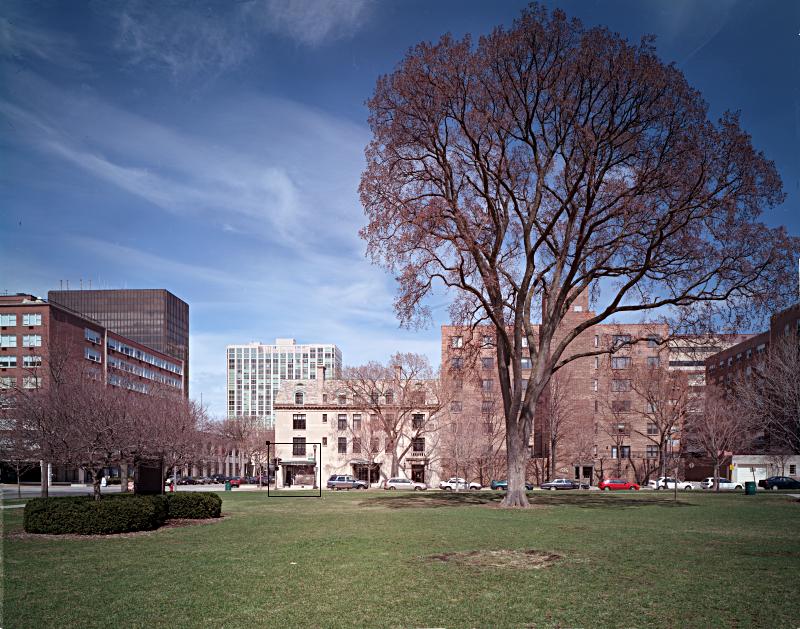
Here is the detail in the boxed region from the 1800 ppi image. The
edge sharpening has enhanced it somewhat, but the letters that are legible
were legible before sharpening. What was legible at 2400 ppi remained
legible at 1800 ppi.
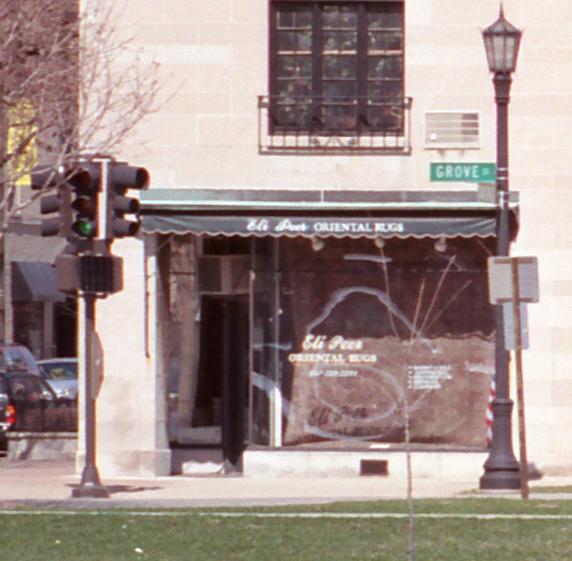
Some people have noted the presence of what looks like chromatic aberration
in some of these images. I am reasonably certain this is an artifact
of the scanner rather than the camera optics. The letters in "ORIENTAL
RUGS", which are clearly legible, are less than 0.1 mm in the 4 x 5 negative.
Experience with this scanner suggests that letters smaller than 0.05
mm in the negative would not generally be legible, although they would be
distinguishable as separate letters.